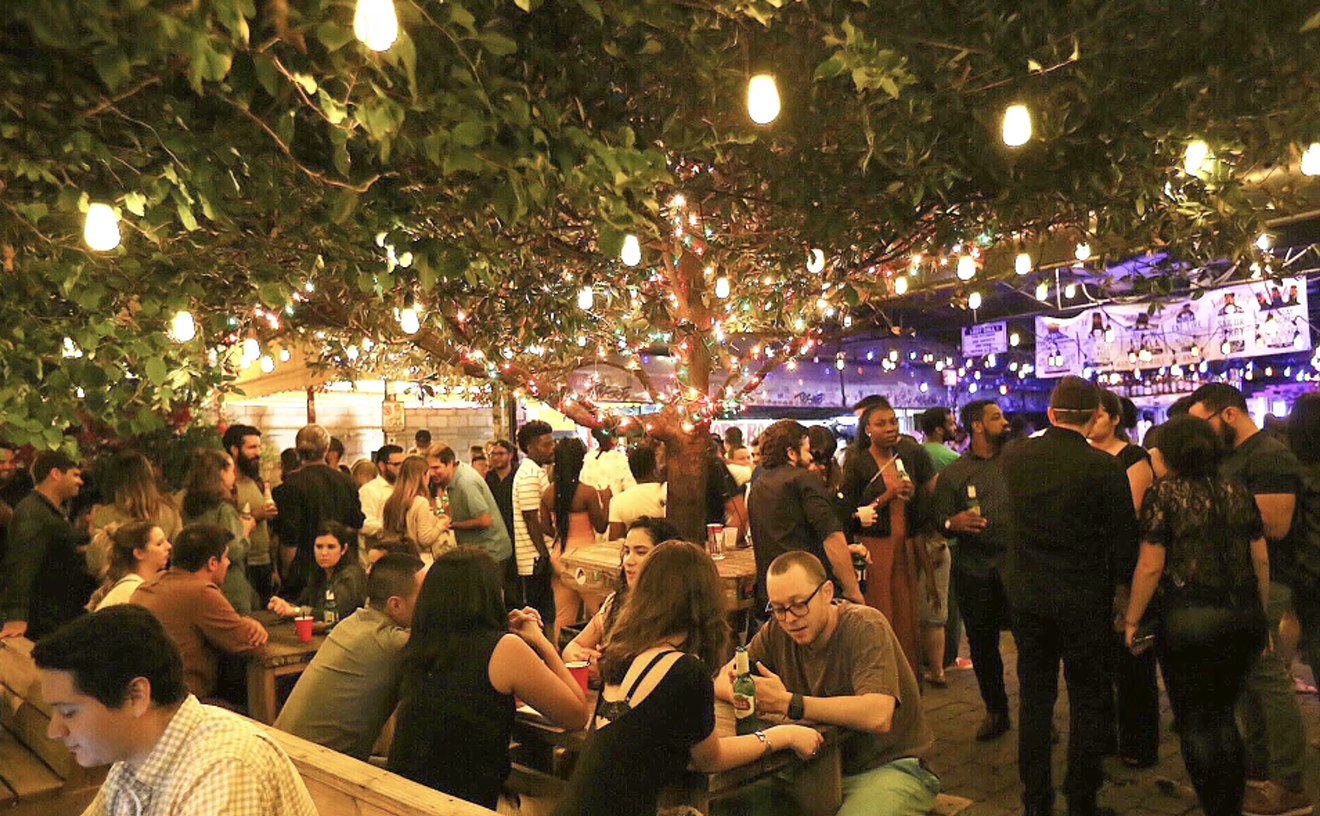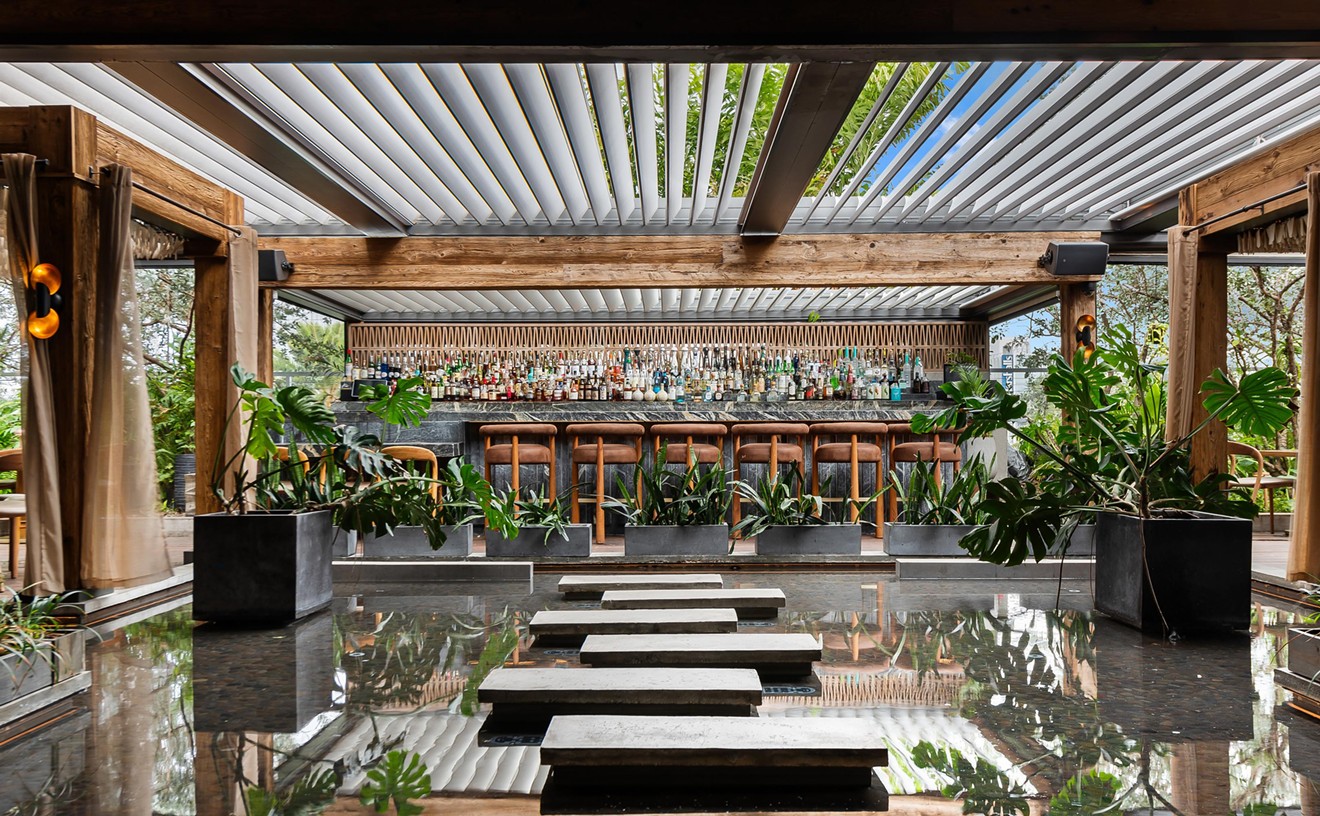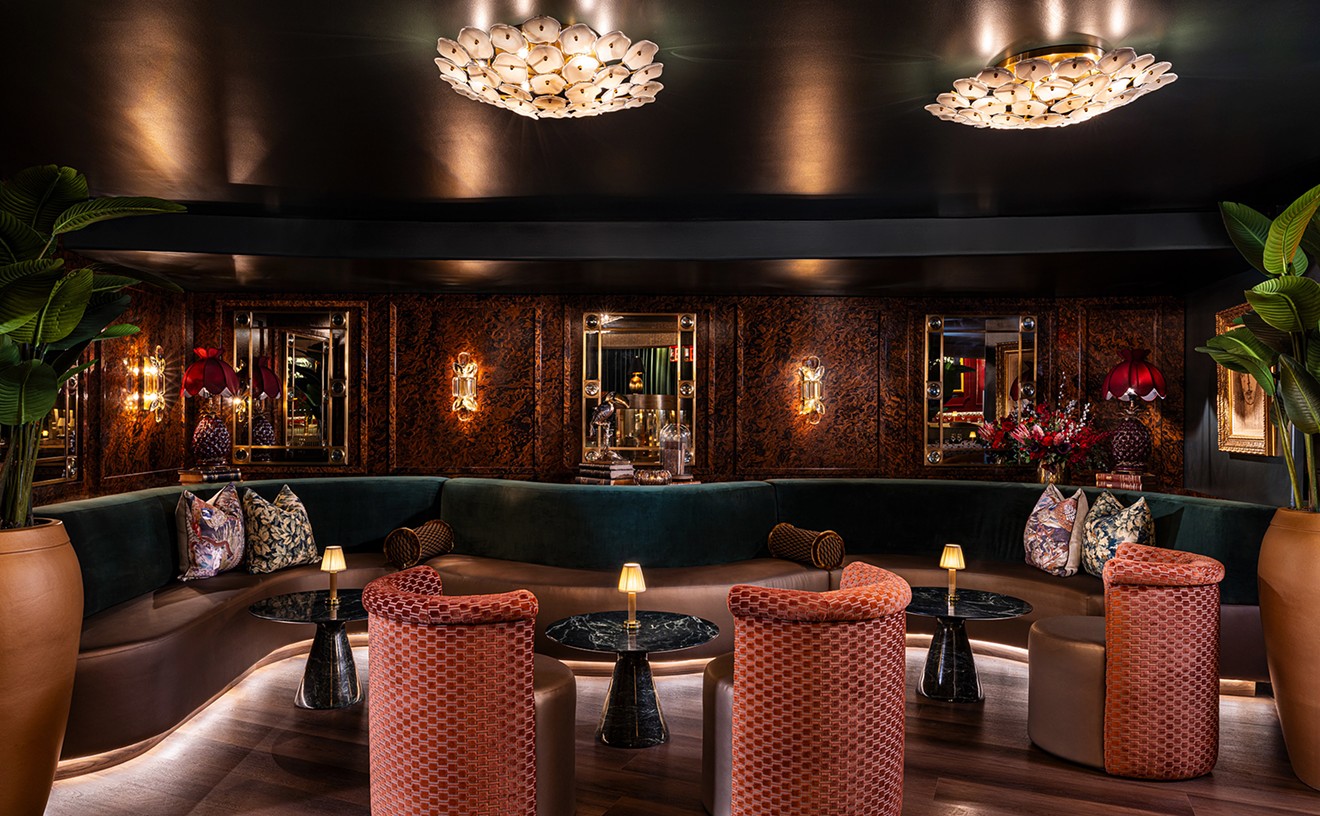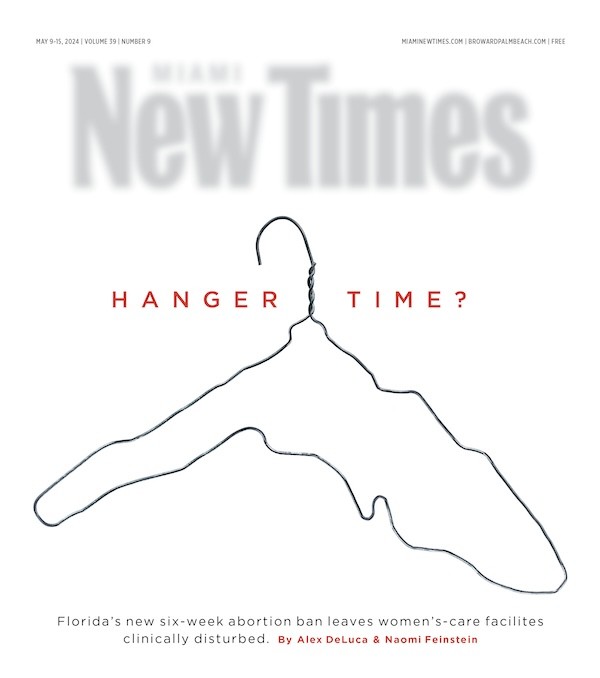About a year ago, though, some correspondence came in that was even over-the-top for Miami, because it just kept coming -- at least five letters. It was from a fellow named Kevin, who said he was a chef at a local sushi bar. What sushi bar? Well, one better than any of the other pathetic places in town, all of which he proceeded to diss in detail and most of which, including my top favorites Matsuri and Nobu, I had reviewed with drooling raves. Boy, did I ever want to trash this guy.
Unfortunately, I can't. Although Nobu is both more stylish a space and more solidly innovative in terms of its new millennium Japanese/Peruvian take on sushi, and Matsuri remains my top neighborhood sushi spot because its specials are equally tasty, cranky Kevin's joint, Siam River, has some of the most creative and undoubtedly the freshest sushi in town.
Siam River also has the advantage for parties that include diners who don't do raw fish; as its name indicates, it's also a Thai restaurant.
It used to be mainly a Thai restaurant with the obligatory pedestrian sushi bar tacked on, because virtually everyplace these days feels the need to serve sushi. (I recently saw an ad for Cajun fast food sushi, but that's definitely a whole different review, and one I hope not to write.) In the fall of 2001, though, following a three-month cooking tour in Japan, the Thai place's half-Japanese, largely self-trained sushi chef convinced the management to let him totally revamp the sushi bar with only never-frozen fish (he insisted, in one of his letters and when I grilled him on my second visit, that all the competition uses some frozen fish including the eel, shrimp, and octopus at Nobu when he worked there opening day). The large selection of fish changes every night according to the catch of the day, but when we dined included unusual flown-in seafood like aka kamasu (Japanese red barracuda) and live tokubushi (a small Hawaiian variety of abalone), as well as varieties of local fish bought daily from Haulover's docks that go far beyond the standard yellowtail and mahi-mahi: gray triggerfish, cottonmouth jack, and much more.
Huedai (Florida mutton snapper), caught two hours before, had just stopped flopping around behind the counter when it was placed before us on top of very well-made sushi rice, sticky enough to stay together yet fluffy; it's made by hand in small batches instead of in the machine most U.S. sushi bars use. The snapper itself was firmer than red snapper and richer than yellowtail, but still mild; the overwhelming impression was totally non-fishy sparkling freshness.
Ordering hamachi belly to see how it differed from regular hamachi, I was surprised by its less soft and fat-marbled texture. But the large slice's taste, in contrast to its crisp texture, was just as buttery as normal hamachi. The most buttery was a piece of kamagawa oo toro, fattiest of the three grades of toro but almost impossible to find in American sushi bars. Swoon stuff.
Uni (sea urchin roe) can be bitterly metallic and grossly mushy when less than pristinely fresh. But Siam River's uni sushi was like mild seafood custard. Uni was also used effectively in two other fabulous preparations. Only price ($4.95) prevented me from ordering half a dozen pieces of broiled fresh Florida stone crab sushi in a circle of toasted nori seaweed, topped with melted uni "sauce" that looked like grilled cheese but tasted like smooth, slightly briny heaven.
And in a most ingenious appetizer, mashed uni served as a binder, along with mashed avocado, of a jalepeño-spiked salmon tartare, served to scoop up with chips that look like potato chips but are actually thinly sliced, spiced, and deep-fried grouper slices. Nope, not fishy, just savory. The dish came with a dip of real wasabi root, which is indescribably more complex than the usual faux horseradish.
Wakame cake with Japanese white shrimp sashimi and beluga caviar was interesting but not something I'd order again, especially with a $19 price. The "cake" tasted just like puréed mystery greens (no resemblance to wakame seaweed in taste or texture) mixed with something the texture of raw egg; it was kinda slimy, to be frank. So were the raw shrimp, which had a lovely sweet taste but looked like small albino worms. And while I never met a beluga egg I didn't like, sevruga caviar at half the price would have complemented the dish at least equally well. Toro tartare wrapped in hamachi was also heftily priced ($13 one night, $17 another night for just two pieces) but better, though the fine tartare cut made toro's amazing texture pointless.
Fresh gingko nut tempura was fried, but not tempura-battered, beans that tasted like a cross between favas and southern boiled peanuts; a nice alternative to edamame.
If you sit at a table instead of the sushi bar, remember to ask for the daily special sushi menu. It's not automatically brought with the regular separate Japanese and Thai menus, and you do want the sushi specials. But it'd be a mistake to ignore Siam River's Thai dishes. Tom yum goong soup was a refreshingly balanced hot and sour take. A "Best Choice" pick called spring break duck was completely nonfatty pieces of duck fried crispy but, unlike average Thai duck dishes, not breaded, in a delectable, subtly sweet unthickened sauce. Oddly, though, the dish's vegetables -- carrots, onions, scallions, tomatoes, and peas -- were all raw except the peas, which were overcooked. With a more substantial sauce, like peanut, the raw veggies would've worked. As it was, they were unappealing. But it was one of the restaurant's very few missteps.









